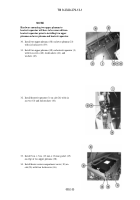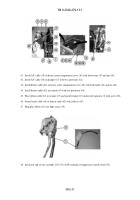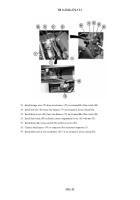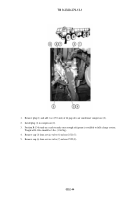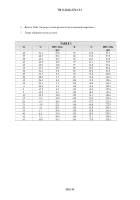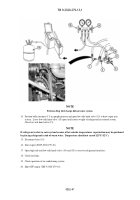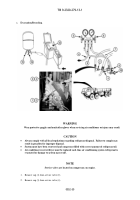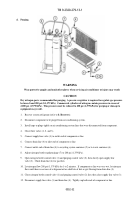TB-9-2320-279-13-1 - Page 435 of 524
TB 9-2320-279-13-1
0052-43
5. AIR CONDITIONER CHARGE/SERVICE.
This task covers:
a.
Charging.
d. Purging.
b.
Recovery.
e. Flushing.
c.
Evacuation/Recycling.
f. Follow-On Maintenance.
INITIAL SETUP
Models
All
Test Equipment
Test Set Subassembly
Leak Detector, Refrigerant Gas
Special Tools
None
Supplies
Dye, R134A/PAG Tracer 32
Oil, Pag 46
Freon, R134A
Personnel Required
MOS 52C, Utilities equipment repairer
References
None
Equipment Condition
Shut off engine (TM 9-2320-279-10)
Engine cover opened (TM 9-2320-279-10)
Special Environmental Conditions
None
General Safety Instructions
None
a.
Charging.
WARNING
•
Use care to prevent refrigerant from touching skin or eyes.
Liquid refrigerant, when exposed to air,
quickly evaporates and will freeze skin or eye tissues.
Serious injury or blindness may result if you
come in contact with liquid refrigerant.
•
Refrigerant R-134a air conditioning systems should not be pressure tested or leak tested with
compressed air.
Combustible mixtures of air and R-134a may form, resulting in a fire or explosion,
which could cause personnel injury or death.
CAUTION
•
Refrigerant oil must be added to air conditioner system before charging with refrigerant or air
conditioner compressor will be damaged.
Add same amount of new refrigerant oil in air conditioner
compressor as was noted during recovery or evacuation, except if charging for the first time.
Maximum amount of refrigerant oil required for air conditioner system is 13 oz (369 g).
•
RECOVERY and EVACUATION/RECYCLING procedures must be performed before system is
charged or damage to system may result, except if charging for the first time.
•
Air conditioner system must be in a 10 to 15 in. Hg vacuum status before charging.
•
Use care to prevent overcharging or damage to compressor may result.
Back to Top



